#philip count of flanders
Explore tagged Tumblr posts
Text


Some Dieudonnés
Putting these 2 illustrations next to each other, since I liked the style I used for this! Finally got better at drawing veils and patterns which is nice
#philip augustus#philip ii of france#louis vii of france#adela of champagne#adele de champagne#henry the young king#philip of alsace#philip count of flanders#isabella of hainault#isabelle de hainaut#12th century#medieval#historical illustration#french history#my art#best worst annoying boy#merovingian swag
48 notes
·
View notes
Text

Philip the Bold, Duke of Burgundy (1342-1404). Unknown artist.
#philippe le hardi#duc de bourgogne#duché de bourgogne#bourgogne#Philippe II le Hardi#philip the bold#duke of burgundy#royaume de france#kingdom of france#duchy of burgundy#maison de valois#house of valois#engraving#in armour#engravings#count of flanders#count of artois#count of burgundy#valois bourgogne#regent of france#régent de france#royalty
18 notes
·
View notes
Text

Philip the Fair (Philip the Handsome), Lord of the Netherlands. By Louis Gallait.
#louis gallait#haus habsburg#the netherlands#Koninkrijk der Nederlanden#Koninkrijk België#Royaume de Belgique#kingdom of belgium#Philip the Handsome#Lord of the Netherlands#duke of burgundy#king of castile#king of leon#duke of brabant#duke of limburg#count of artois#count of holland#count of flanders#count of zeeland#full length portrait#house of habsburg#monarquía española#reyes de españa#rey de castilla#casa de austria#felipe i#felipe el hermoso#full-length portrait#bourgogne#comte de flandre#duc de brabant
15 notes
·
View notes
Text
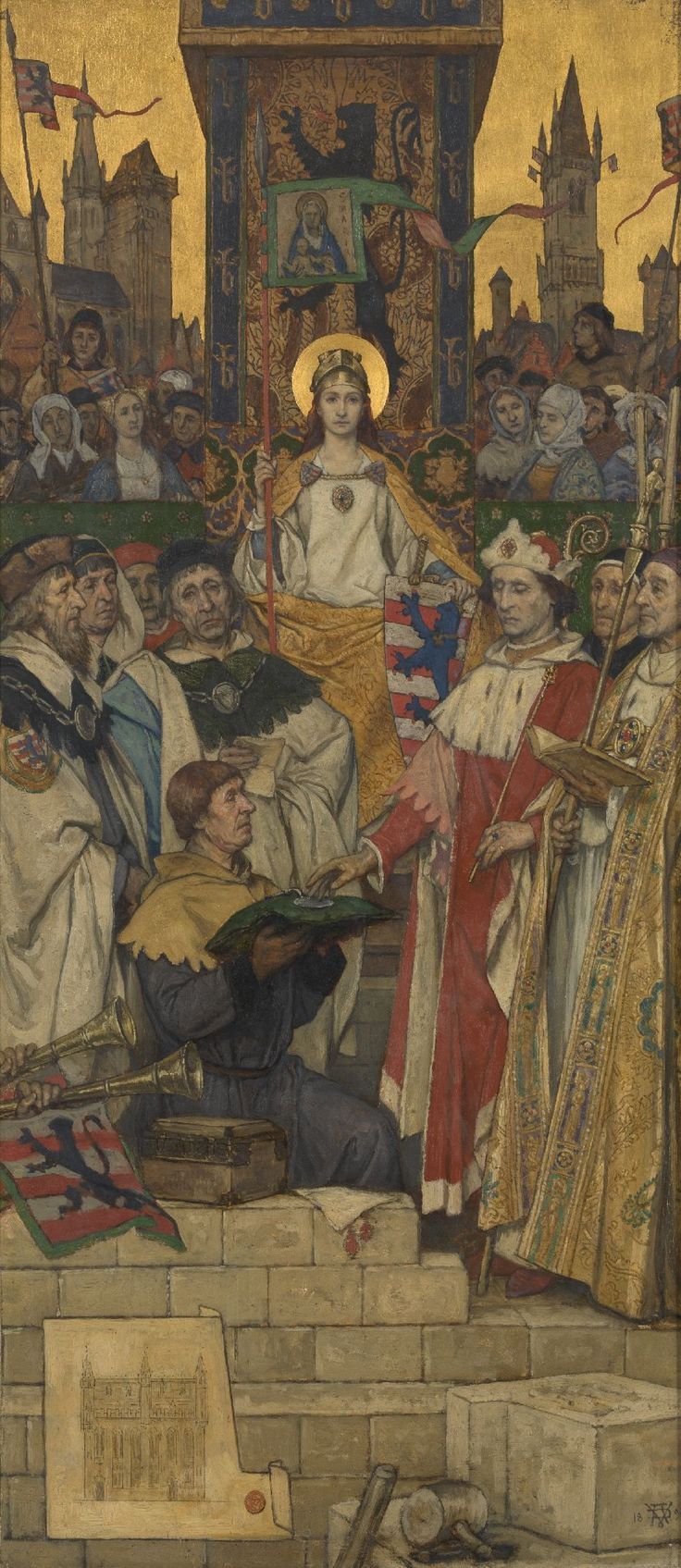
Louis of Male Laying the Foundation Stone of the Town Hall
Artist: Albrecht De Vriendt (Belgian, 1843-1900)
Date: 1893
Medium: Oil on panel
Collection: Royal Museum of Fine Arts Antwerp, Belgium
Louis II, Count of Flanders
Louis II (Dutch: Lodewijk van Male; French: Louis II de Flandre) (25 October 1330, Male – 30 January 1384, Lille), also known as Louis of Male, a member of the House of Dampierre, was Count of Flanders, Count of Nevers, and Count of Rethel from 1346 to 1384, and also Count of Artois and Count of Burgundy from 1382 until his death. He was the son of Count Louis I of Flanders and the Countess of Burgundy and Artois, Margaret I of Burgundy, the youngest daughter of the King of France, Philip V the Tall.
#historical scene#historical art#louis of male#foundation stone#town hall#louis ii#count of flanders#house of dampierre#halo#city#men#women#robe#cloak#narrative art#flags#book#box#trumphets#cushion#painting#oil on panel#artwork#oil painting#fine art#belgian culture#belgian art#albretch de vriendt#belgian painter#european art
23 notes
·
View notes
Text
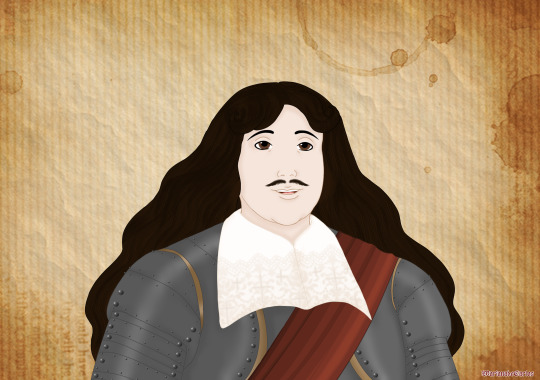
Don Juan José of Austria (1629-1679) Fanart
He is the half-brother of Charles II of Spain and the extramarital son of King Philip IV and the actress María Calderón. He was a Spanish politician and military man. He was named after Don Juan of Austria the Hero of Lepanto. His mother La Calderona was a comedy actress. Duque de Medina las Torres who first called Philip's attention to her. She was beautiful and caught King Philip IV's eye while performing.
They developed a romance, and the King simply could not resist her When Don Juan was born, his mother entered the convent because she followed the etiquette of the Spanish court, which prohibit any woman who had been honored by the king from being honored by any man. He was born on April 7th, 1629, and was baptized two weeks later. He was registered "hijo de la Tierra" (The son of soil) of unknown parents.
He was brought up in a distinct remote from the capital, and his education was put in the hands of a mathematical Jesuit and a theological inquisitor. He could later have been the archbishop of Toledo had not for the Count-Duke of Olivares wished to legitimize his own bastards and prevailed upon Philip to do the same to make his action more respectable. However, at the age of thirteen, Don Juan was recognized by Philip IV and made Grand Prior of St. John with an almost royal household and large income. This rank will be a stepping stone for his career. His rank is to be that of the potentates like the Electoral princes, who were addressed as brothers by kings and Serenity by subjects. Baltazar Carlos refers to him as "my brother Don Juan". (They are the same age btw) They can go to the theater together on the same couch, but they are not allowed to eat together. Elizabeth of France would end her letters to him with "To Don Juan, my son" while Balthazar ended "To Don Juan de Austria, my brother, and my friend" At the age of 15, He was already the Governor of Flanders, and two years later he was given the title the Prince of the Sea, chiefly because his namesake had been victor of Lepanto. His only sea battle was the defeat of a small French boat. Henceforward he was to fight on land, and unfortunately with far less success against far more powerful foes.
In 1663, Don Juan of Austria was named "Captain General of the Conquest of Portugal” and placed in command of twelve thousand infantry and six thousand cavalry. Early success in 1663 was followed by embarrassing losses later that year; it was already clear that the undertaking was headed for disaster. Philip IV recalled Don Juan to Madrid, subjected him to an investigation, and replaced him with the Marquis of Caraçena.
In his youth, he was affable, brave intelligent, and hard-working but the twin enemies of his ambition and his defective birth tended to make him lose those great qualities he possessed and gain many less admirable ones.
In the summer of 1665, When it became clear that his father had few more months of life, He made a proposal that would shock Philip IV and lead him to refuse to see Don Juan on his deathbed. He presented paintings he made, one of these was a miniature representing Saturn contemplating with a smile the incestuous dallyings of his son and daughter, Jupiter and Juno. It was on the occasion of a visit to Aranjuez, that, he had been summoned by Philip to discuss whether he would be preferred to be Archbishop of Toledo or Inquisitor General. When Philip IV saw the painting the intention was clear. The face of Saturn resembles Philip IV, The face of Jupiter resembles Don Juan and the face of Juno resembles Margarita. When he saw this he was enraged and turned his back on him and never saw him again. Mariana of Austria loathed Don Juan for this scandalous act.
Don Juan of Austria had journeyed to Madrid to see his dying father. Philip reportedly stated that “this was a time to die” and insisted that Don Juan leave Madrid at once. Even if the words were apocryphal, Philip IV’s public snub confirmed his intention to exclude Don Juan from the regency government and succession, intentions made public when the testament was read. Philip IV drew his final breath on Thursday, September 17, at 4:15 a.m. Those in surrounding areas entered the royal chamber as the final moments approached.
In Mariana's regency, he overthrew Jose Everardo Nithard and later Fernando de Valenzuela. He and Mariana of Austria were rivals during the regency period. He arranged several coups to overthrow Mariana, which eventually succeeded, forcing Mariana of Austria into exile.
When he gained power, he successfully imposed laws that were beneficial to the country, despite becoming unpopular.
On August 24, 1677, he fell ill but seemed likely to recover. However, it meant a delay, as the king may not have wanted to dismiss Don Juan while he was bedridden. Even on his sickbed, Don Juan must have known that his tenure was about to end. He died four days later and was buried in El Escorial.
The story of Don Juan was incredible and interesting. He may not have always been successful in his plans, but his dedication, intelligence, and charisma made him formidable.
Sources: Carlos, The king who would not die, by John Langdon Davis and Queen, Mother, and Stateswoman by Silvia Z. Mitchell
I would like to welcome my new followers, Thank you for following me
@girlvelazquez @dragonesdelaemperatriz @spiritofpassionfruit @uncookedlemon2 @heorikwaggo @sinnedmarrow
To all my followers, thank you for your support on my blog. It means a lot to me.
@rmelster @marythequeen @mariatheresaofspain @makosxa @isadomna @chateau-de-gamin @theinfantaaofspain @fourhumorous @kirby-of-aragon @madamelareinette @la-sa-si
@1ausu @catherinemybeloved @jolaar @taniatas @thelouisfanclub @alywww @stayopenmindd @lingarhan @elizabeth29123 @historysnow @belongstocaptaindoyle @sapphicfolch @mani4milfs
@austin-friars @ilysanwne @florianrp @catherinedefrance @probespierre @borbon-casual @iluz @azzrael99
#he is smiling#don juan jose of austria#history#don juan#bastard child#bastard brother#house of habsburg#spain#17th century#art#my art#please like and reblog#my artwork#kingdom of spain#philip iv#habsburg#hws austria#historical figure#I apologize for the background I am out of Ideas#sorry for the tags
37 notes
·
View notes
Text
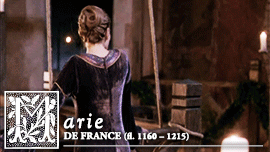

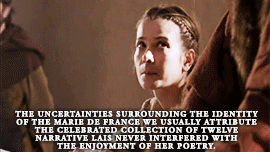
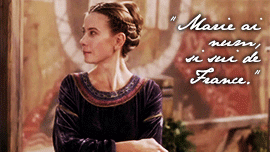
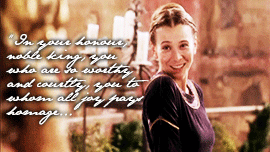
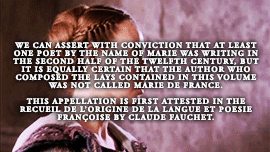

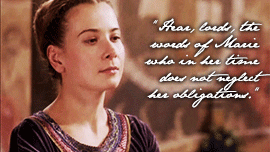
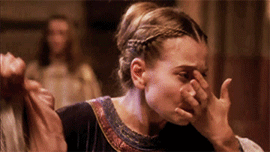

Medieval Women Week || Favorite woman writer ↬ Marie de France
Who was this versatile author, the first woman of her times to have written successfully in the vernacular? She was definitely not Marie de Champagne, daughter of Eleanor of Aquitaine and patroness of Chrétien de Troyes, as Winkler suggested. A tempting, but by no means fully convincing, identification is with Marie, abbess of Shaftesbury in Dorset, illegitimate daughter of Geoffrey Plantagenet and half-sister to Henry II. … A claim has been made, albeit somewhat thin, for Mary, abbess of Reading. This abbey was well known as a centre of literary activity and had in its possession the Harley manuscript containing, as we have seen, both the Fables and the Lais. There is no clear-cut reason why either work could not have been written by an abbess or a nun, and there is some slight evidence of experience of monastic life in Le Fresne, Yonec and Eliduc. But the prominence of the motif of adultery in the Lais (see also fables 44 and 45), Marie’s attitude towards the dissolution of marriage in Le Fresne and Eliduc, and her evident interest in the chivalric life suggest that these love poems were not written by someone steeped in ecclesiastical ideology. … Marie de France was certainly an educated lady of good family, who knew Latin well enough to have contemplated translating a Latin work into French (Lais, Prologue, vv. 28–32) and to have done so in the case of the Espurgatoire. She was obviously a good linguist and acquired a sound knowledge of English before translating the fables. She was also fully conversant with the life and aspirations of the nobility of her time. Her education could well have been obtained in a convent and her knowledge of court life from her upbringing and personal experiences in England. Was she Marie, the eighth child of Waleran de Meulan (also called Waleran de Beaumont), a member of one of the greatest of the Norman houses? Waleran’s fief was in the French Vexin, which would tally with Marie’s statement that she comes from France and explain her evident local knowledge of the town of Pitres in the Norman Vexin… Marie de Meulan married Hugh Talbot, baron of Cleuville, owner of lands in Herefordshire and Buckinghamshire, as well as in Normandy, and a member of a family prominent in several English counties including Devonshire, Gloucestershire and Kent. Marie’s father is an interesting figure – a loyal and courageous soldier, but also a well-educated man who may have written Latin verse. Moreover, several of the manuscripts of the Historia Regum Britanniae of Geoffrey of Monmouth are dedicated to him. It is tempting to think that his daughter may have known William of Gloucester, a possible Count William, as his father was also one of Geoffrey’s dedicatees. Marie de Meulan may, however, have been too young to be Marie de France, as her birth seems to date from the 1140s, perhaps as late as 1150. The most recent identification has been as Marie, countess of Boulogne after 1154, daughter of Stephen of Blois (King of England, 1135–54) and of Matilda of Boulogne. Educated in a convent, Marie de Boulogne became abbess of Romsey in Hampshire, but was removed from her convent by Henry II, who wanted to keep Boulogne in his sway. She was married off to Matthew of Flanders and thus became the sister-in-law of Hervé II, son of Guiomar of Léon... Eventually, at some time between 1168 and 1180, Marie de Boulogne returned to a convent, perhaps that of Sainte Austreberthe at Montreuil-sur-Mer in her own county. Her Count William could have been William of Mandeville, a crusade companion of Philip of Flanders, her husband’s brother. The ‘noble king’ would probably have been the Young King, as Philip and Matthew, originally supporters of Henry II, changed sides in 1173. Marie herself may have already been a supporter of the Young King, as in 1168 she sent Louis clandestine information about the secret negotiations between Henry and the Emperor Frederick. — The Lais of Marie de France translated with an introduction by Glyn S. Burgess and Keith Busby
#medievalwomenweek#marie de france#english history#french history#european history#women's history#medieval#history#nanshe's graphics
37 notes
·
View notes
Text
"Although heiress to a wealthy and powerful county, [Ida of Boulogne] is portrayed as a pawn, [Renaud of Dammartin's] stepping stone to a more favorable position vis-à-vis the king of France. While she is characterized as instrumental in Renaud’s rise to power, she disappears from most narratives after their marriage and his pledge of fidelity to the king [Philip Augustus] in 1191. Such accounts, which fail to recognize her as an actor in her own right, reduce Ida to an object of exchange among men, not only dismissing her desires as inconsequential but discounting them in the interest of male scheming. The use of the term abduction to describe the events preceding her marriage perpetuates this view, suggesting a bride forced to marry against her will. As a result of such assumptions about her lack of agency, Ida is only briefly mentioned in texts that purport to address the political history of France during Philip’s reign (1180–1223).
However, a careful assessment of the sources in which Ida appears, including both chronicles and charters, reveals a more nuanced view of her ‘‘abduction’’ and of her agency as countess of Boulogne. The chronicle of Lambert of Ardres, the main narrative source for her marriage to Renaud and for conclusions about the forced nature of their union, suggests that in fact Ida conspired with Renaud to secure it over serious opposition. The registers of Philip and the cartularies compiled by monastic foundations in Boulogne provide considerable information that corroborates the view of Ida as a willing accomplice in her abduction. The charter evidence demonstrates that while her ability to govern Boulogne was limited during her minority and first two marriages, it grew markedly during her marriage to Renaud, further supporting the theory of her complicity. Indeed, from 1192 until Renaud’s incarceration in 1214, Ida emerges as an increasingly active religious patron who participated extensively in county governance, and it may well be that marriage to Renaud attracted her precisely because it afforded her a greater political presence."
— Erin L. Jordan, "The ‘‘Abduction’’ of Ida of Boulogne: Assessing Women’s Agency in Thirteenth-Century France", French Historical Studies, Volume 30, Issue 1 (Winter 2007)
"Ida’s rise to a position of authority as heiress of Boulogne illustrates the problems that resulted from the medieval insistence on primogeniture and patrilineage and from the high mortality rates among men in the era of crusades, tournaments, and constant military conflict. […] Initially, Ida’s experience seems to have conformed to the expectations attending female authority versus male power. Until her first marriage in 1181, Boulogne was ruled by her uncle, Philip of Alsace, count of Flanders since the death of his father, Thierry. The young countess was rarely mentioned in documents issued by Philip that pertained to the governance of Boulogne. In a charter issued in 1180 concerning the collection of a tithe on herring at Calais, Philip referred to Ida as his niece, countess of Boulogne, whose tutor he had become. Both Ida and her younger sister, Mathilda, appeared among the list of witnesses, identified as ‘‘daughters of my brother Mathieu, once count of Boulogne.’’ In addition to governing Boulogne, Philip orchestrated both girls’ marriages, which he viewed as opportunities to foster alliances favorable to Flanders.While Ida was married to Gérard II, count de Geuldre, Mathilda was married to Henri of Louvain, son of Godefroid, duke of Brabant. Although the union of Ida and Gérard was not in the best interests of France, the young Philip Augustus was not yet in a position to object. During their brief marriage, Gérard demonstrated little interest in county affairs, apparently issuing only one charter as count of Boulogne. This charter, which granted concessions to the town of Calais, was witnessed by a number of individuals. Ida was not among them, but she issued a later charter confirming her husband’s actions.
After Gérard’s death in 1182, Ida returned to Boulogne, where she acted as countess until 1183, issuing four charters to several religious foundations in her domains. In 1182 she issued one granting certain forest rights to the abbey of Saint-Josse-sur-Mer ‘‘for the soul of her father,’’ whose sepulcher was located in the abbey’s church. In 1183 she made concessions to the abbey of Licques concerning a tithe at Westaxla ‘‘for the soul of her father and her mother’’; she also confirmed earlier charters issued by ‘‘those men of good memory, the counts of Boulogne, Mathieu and Gérard de Geuldre’’ on behalf of the abbey. The third charter issued by Ida in 1183 confirmed a donation of a tithe made to the abbey of Andres. This charter was most likely issued on the eve of her marriage, as she stipulated that the donation would be confirmed later by her husband. All of these charters were issued by Ida expressly as ‘‘countess of Boulogne’’ and under her seal.
However, Ida’s increasing activity as countess was temporary, as the county of Boulogne was too strategically important for her to remain a widow. Her second marriage, to Bertold IV, duc de Zeringhen, in 1183, was also arranged by Philip of Alsace, whose motives are unclear. Since Bertold was nearly sixty, it seems unlikely that Philip expected the union to produce an heir. Although Ida had become more visible after the death of her first husband, she apparently returned to the periphery and issued not a single charter during her three years of marriage to Bertold. Her limited role in county affairs may have resulted from his lack of interest, as he issued no charters pertaining to Boulogne during their marriage. Like Gérard, Bertold seems to have been content to leave control of the county to Philip, which may be why the marriage appealed to the count of Flanders in the first place.
When Bertold died in 1186, Ida returned to Boulogne. Although she had already been married twice, she was only twenty-five [or, alternatively, as young as twenty-one] and had not produced an heir to the county; she would most likely have anticipated a brief widowhood.
Most modern accounts of her third marriage, to Renaud of Dammartin, imply that the union occurred against her will, but the evidence is open to interpretation. If nothing else, it suggests the need to revisit our understanding of the medieval use of the term abduction. According to Lambert of Ardres, after her return to Boulogne, Ida began an affair with Arnold of Guines, son of Bauduin II, count of Guines, and a staunch ally of Philip of Alsace. Arnold had been raised in Philip’s household and had gradually distinguished himself as a man of courage and honor. When Renaud, son of the count of Dammartin, began to entertain thoughts of marrying Ida, his intentions were made known to her by Isabelle of Hainaut, niece of Philip of Alsace and wife of Philip Augustus.Lambert suggests that initially, in spite of her affair with Arnold, Ida was receptive to Renaud’s overtures: ‘‘He sought her boldly with a not dissimilar effort and expectation, and he labored and strove to attract her love with great industry. Inflamed and alight as she was with women’s frivolous love, she would have satisfied both her desire and Renaud’s if she had found her uncle, the count of Flanders, ready and willing to consent.’’ However, Philip of Alsace was convinced that Ida’s marriage to Renaud would force him to relinquish control of the county. According to Lambert, ‘‘Count Philip, a man of worthy spirit, had gotten the county of the land of Boulogne and held it in hand and had received and dispensed its fruits at will.’’ Unlike Renaud, Arnold was clearly subordinate to the count of Flanders and could not wrest from him control of Boulogne. Furthermore, Philip of Alsace was convinced that Renaud ‘‘was both related to and had the ear of the king of France and helped and obeyed him in every way and in all things in his council.’’By this time the breach between Philip of Alsace and Philip Augustus had widened into open hostility, and the count of Flanders undoubtedly feared the consequences of an alliance between the king of France and the count of Boulogne. As a result of her uncle’s opposition to her union with Renaud, Ida, ‘‘full of stupid female instability and inflamed by love,’’ returned her affection to Arnold.
However, Renaud was not easily dissuaded; he continued to plot marriage, even though he was already married to Marie de Chatillion, the king’s cousin. Luring Ida away from Arnold, Renaud removed her to his castle in Lorraine and consummated their union. To Lambert, it is clear that Ida assented to her ‘‘abduction’’: ‘‘Renaud, who was always vigilant and feared Arnold of Guines more than anyone else, secretly came to her with his henchmen and—oh, the perfidy of female instability!—without really using force, he brought force against the willing woman, just as he wished to do; he abducted her and carried her to the fortress of Riche in Lorraine without consulting Count Philip of Flanders.’’ While Lambert does use the word abduxit to describe Renaud’s actions, it is clear in context that any ‘‘abduction’’ was feigned, as Ida was clearly a willing participant in the scheme. Thus Renaud’s real crime was to marry Ida without the consent of her uncle and tutor, Philip of Alsace.
Lambert states that Ida, appealing to Arnold for help, insisted that ‘‘Renaud had brought force against her while she resisted and was unwilling.’’ Yet he remains skeptical, dismissing her assertion as ‘‘the machinations of feminine treachery.’’ Lambert presents her as complicit in her own abduction but regretful of her actions afterward. She promised Arnold that ‘‘she would leave Renaud and marry him [Arnold] if he could come for her’’ however, before he could arrive, she betrayed him to Renaud by informing the latter of her impending rescue. Ida’s duplicity enabled Renaud to seize the unsuspecting Arnold and imprison him in ‘‘unyielding shackles.’’ Ultimately, Lambert dismisses Ida’s protestations as a disingenuous attempt to manipulate the men around her. He represents her ‘‘abduction’’ as a means of circumventing her uncle’s opposition to her marriage to Renaud. Once the union was consummated, of course, Philip of Alsace’s disapproval was irrelevant. Even though he unequivocally condemns Ida’s behavior, Lambert questions neither her complicity nor her agency.
Although Lambert mentions only the objection of Philip of Alsace, Ida’s abduction may also have been an attempt to overcome the opposition of Philip Augustus, whose niece would have had to accept an annulment from Renaud before he could marry Ida. However, like Philip of Alsace, Philip Augustus would have been forced to recognize the marriage once it had been consummated and Ida’s consent was no longer an issue. After receiving the annulment (retroactively), Renaud secured Philip Augustus’s consent (also retroactively) to marry Ida, who then declared by charter in 1191 that ‘‘the lord king of France Philip received my homage of the county of Boulogne and received my husband, Renaud of Dammartin, as his liege man of the same county with my assent.’’ Apparently determined to make the best of the situation, the king exacted from Ida the unprecedented sum of seven thousand livres artois, in addition to the feudal relief of three thousand livres artois owed by major vassals of the crown; he also forced her to forfeit a key fortress at Lens and relinquish all claims to the Vermandois. Moreover, in pledging homage to Philip Augustus, Ida and Renaud removed Boulogne from a position of subordination to the count of Flanders and thereby became direct vassals of the king, strengthening his position by weakening his rival’s.
Lambert’s depiction of Ida as an assertive woman who may have welcomed marriage to Renaud is corroborated by charter evidence. Initially, Ida seemed destined, as expected, to function as a feudal placeholder, legitimating the actions of the men who wielded power in her stead. During her minority she played an extremely limited role in the governance of Boulogne. Rather than expanding this role by removing her from the tutelage of Philip of Alsace, Ida’s first two marriages perpetuated her marginalization. When she returned to Boulogne in 1186 after the death of her second husband, however, Ida became increasingly active in county affairs. In four years she issued sixteen charters, directing donations to the church of Watten and to the abbeys of Andres, Clairmarais, Cluny, Fontevraud, Longvilliers, Saint-Vulmer, and Sainte-Austreberthe de Montreuil. Such patronage did not merely stem from personal piety; it would have been perceived by her contemporaries as a reflection of her authority and an indication of the resources at her command.
Ida also participated in the secular affairs of Boulogne, granting rights to a toll to Robert de Béthune in 1189 and exemptions from tolls for travel among various destinations in the county of Boulogne. She also relinquished the droit de lagan, the seigneurial right to all ships that washed ashore, in her domains. Such concessions proved crucial to the town of Boulogne’s ability to establish itself gradually as an autonomous community. Ida’s increasing visibility in the historical record after her second marriage most likely mirrored a growing confidence born of age and experience; it was made possible in part also by the absence of Philip of Alsace on crusade.
While a third marriage may have been inevitable for Ida, her fading back into obscurity in the documentary record was not. Her marriage to Renaud did not force her to return to the margins of government. The number and nature of the charters she issued, both independently and jointly with her husband, demonstrate that Renaud’s interest in the county gave Ida ample opportunity to participate in government. Their marriage was much more a partnership than either of her previous unions had been. Not only did the couple continue to reside in Boulogne, but Ida actively helped her new husband govern, especially in internal matters. The nature of their arrangement is aptly illustrated by the two charters issued on the same day in Paris in 1191 after their marriage. The first, issued by Ida under her seal as countess, was the one stating that the king had accepted her pledge of fealty for the county of Boulogne and had received Renaud ‘‘as his liege man’’; the second, promulgated in the name of the king, conveyed his willingness to accept Renaud’s homage with the consent of Ida, and to accept her homage as well.
In this transaction Ida did not merely consent to Renaud’s oath of homage or appear jointly with him; she was required to make the pledge in her own name. She then designated Renaud as her representative, chosen with her consent to perform the duties associated with the fief. This arrangement illustrates the difference between authority and power in the Middle Ages, particularly with regard to women who inherited powerful fiefs. Legitimate authority in the county of Boulogne derived from Ida, daughter of the former count. Her consent to Renaud’s vow of homage was necessary for him to act in her name as count of Boulogne, wielding power on her behalf. Clearly, Ida’s role was more than perfunctory, her consent more than a rubber stamp for her husband’s actions. Furthermore, it was Ida who officially paid the price for marrying Renaud without the king’s prior consent, agreeing to Philip Augustus’s harsh demands by relinquishing claims to the Vermandois, razing the fortress at Lens, and paying ten thousand livres artois. Renaud issued no corresponding charter concerning Philip’s demands. In fact, he did not grant his consent in either charter to any of his wife’s actions. He remained a silent witness, undoubtedly present but not participating in the legal process.
During their marriage Ida appeared in twenty-four charters, nineteen of them issued jointly with Renaud. Roughly half concerned county administration, primarily arrangements made with local governments. For example, in 1203 the count and countess granted the aldermen of Boulogne extensive rights to self-government, and in 1204 they relinquished the droit de lagan in the area of Rouen. Two years later they relinquished it in Saint-Omer as well, and in 1210 they arbitrated a dispute between the towns of Calais and Merch. Ida and Renaud also made grants to various religious communities, many of which had enjoyed comital favor for generations. The abbey of Saint- Bertin received two confirmations of earlier donations, including rights to a tithe of herrings from Calais and exemption from a toll at Wisant. The abbey of Andres received rights to alms in the form of woods at Hodenehout that Renaud and Ida donated in 1194, and in 1199 the couple confirmed the possessions and privileges enjoyed by the abbey of Saint-Wulmer. The abbey of Notre-Dame du Parc received an annual rent of ten thousand herrings in 1209.
The charter evidence discussed above illustrates the various ways that Ida and Renaud negotiated their roles as countess and count, sharing both authority and power. Their union appears to have been mutually beneficial. Marriage to Renaud allowed Ida considerable independence and autonomy. Rather than returning her to the margins of political activity, where her first two marriages had confined her, it propelled her to the forefront of comital affairs. At the same time, Renaud acquired access to Boulogne’s vast resources and, by leveraging his control of the county, became one of the most powerful men in northern Europe, courted by the kings of France and England. His increasing importance is illustrated by Philip Augustus’s repeated attempts to secure his support with royal favors, including investment with the county of Mortain in 1201 and the arranged marriage of his brother Simon to Marie, daughter and heiress of the count of Ponthieu, in 1208."
#I love Ida so much fr she led such a vibrant fascinating and ultimately tragic life#ida of boulogne#renaud of dammartin#12th century#13th century#french history#historicwomendaily#women in history#my post
13 notes
·
View notes
Text
THIS DAY IN GAY HISTORY
based on: The White Crane Institute's 'Gay Wisdom', Gay Birthdays, Gay For Today, Famous GLBT, glbt-Gay Encylopedia, Today in Gay History, Wikipedia, and more … November 13


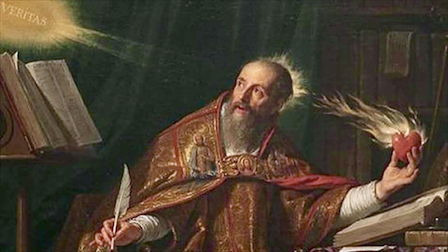
354 AD – Early Christian writer St. Augustine was born on this date (d.430) Following the example of St. Paul, Augustine set the standard for confessional literature that was to flourish in the centuries that followed. The pattern, of course, is a detailed listing of one's sins, followed by a narration of some event or events that made one long for salvation, and then an enunciation of the pains and joys of penance with the hope of future redemption.
Augustine confessed not only to having fathered a son, but to friendship that was classically homoerotic. When he was a young man, his closest friend died and Augustine contemplated joining him in death. "I felt that his soul and mine were `one soul in two bodies'; and therefore life was to me horrible because I hated to live as half of a life; and therefore perhaps I feared to die, lest he should wholly die whom I loved so greatly. My longing eyes sought him everywhere." Augustine, of course, cast off all sins of the flesh and becoming one of the great founders of Christian doctrine, admonished us all to do the same.


1759 – In the Netherlands, minister Andreas Klink is banished for life for having committed sodomy. He defends his attractions as natural.

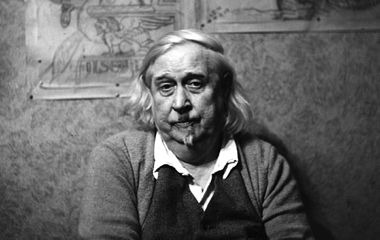
1879 – Marcus Behmer (d.1958) was a German writer and book illustrator, graphic designer and painter.
Marcus Behmer was a son of the painter Hermann Behmer. His uncle Rudolf Behmer, known as a breeder of Merino sheep - was the twin brother of his father. His brother Joachim Behmer was also active as an artist.
His artistic beginnings came with his first major success with the illustrations for Wilde's Salome in 1903. The early works show the influence of the illustrations of Aubrey Beardsley.
On 1 October 1903 Behmer entered military service, was appointed a corporal in 1904 and promoted in 1907 to sergeant. From 1914 he participated in the First World War (in Flanders and in Poland). In the summer of 1917 he fell ill "after an operation in the field" and was six weeks in the military hospital of Jarny . During his time in the army, many so-called "comrades' portraits" emerged, usually reduced, although finely crafted profile views of young soldiers
From 1902 Behmer produced illustrations for books, designed initials and writings, and was responsible for carefully planned publishing facilities. He worked for the Cranach Press of Count Harry Kessler and illustrated numerous articles for the monthly magazine "The Island."
Behmer had been since 1903 a member of the first homosexual organization in the world in Berlin. Because of his homosexuality, Behmer was sentenced in April 1937 by a court in Konstanz to imprisonment of two years. At times he was given the opportunity to work as an artist in prison. The works produced in this period are mostly calligraphic tablets with Greek text (prayers and Bible quotes), and drawings full of bitterness and irony.


1950 – Charles Kaiser is an American author, journalist and academic administrator. In 2018 he was named Acting Director of the LGBTQ Public Policy Center at Hunter College. He is also a nonfiction book critic for The Guardian (US).
His book about one family in the French Resistance, The Cost of Courage (2015) received enthusiastic reviews from The Washington Post, The Wall Street Journal, and The Christian Science Monitor, among many other publications. It also won the grand prize at the Paris Book Festival (2015). In 2016 it was published in France by Seuil as Le Prix du Courage.
His blog about the media, Full Court Press, originated on the website of Radar Magazine in the fall of 2007. He continued it at the Columbia Journalism Review and the Sidney Hillman Foundation until the spring of 2011.
The son of a diplomat, Philip Mayer Kaiser, he grew up in Washington, D.C., Albany, New York, Dakar, Senegal, London, England and Windsor, Connecticut. He has lived on the Upper West Side of Manhattan for many years.
He is the author of The Cost of Courage, 1968 In America, and The Gay Metropolis. The Gay Metropolis was a Lambda Literary Award winner, as well as a New York Times Notable Book of the Year. He was a guest on the Colbert Report, where he discussed a new edition of The Gay Metropolis. He wrote the afterword for a 2012 edition of Merle Miller's landmark work, On Being Different: What it Means to Be a Homosexual. That afterword was excerpted on the website of the New York Review of Books. In 2015 he was inducted into the LGBT Journalists Hall of Fame.

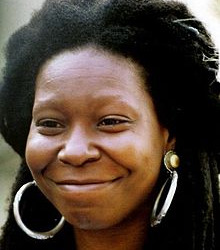
1955 – Caryn Elaine Johnson, best known as Whoopi Goldberg is an American comedian, actress, singer-songwriter, political activist, author and talk show host. She is a strong supporter of the LGBT community.
On April 1, 2010, Goldberg joined Cyndi Lauper in the launch of her Give a Damn campaign to bring a wider awareness of discrimination of the LGBT community. The campaign is to bring straight people to ally with the gay, lesbian, bisexual, transgender community. Other names included in the campaign include Jason Mraz, Elton John, Judith Light, Cynthia Nixon, Kim Kardashian, Clay Aiken, Sharon Osbourne and Kelly Osbourne.
Goldberg's high-profile support for LGBT rights and AIDS activism dates back to the 1987 March on Washington, where she was one of few celebrities participating.


1969 – Today is the birthday of bi-sexual Scottish actor Gerard Butler. He is best known for his portrayal of King Leonidas in the intensely homoerotic film about the Spartans, 300. He also portrayed the Phantom in the 2004 film version of The Phantom of the Opera. He is slated to portray the iconic Scottish poet Robert Burns in an upcoming biopic.
In the gossip mags, there have been numerous stories of his romantic involvements - including several of romantic and/or sexual involvements with other male stars.
In a 2004 Movieline interview he said:
"I talk about my sexuality, but it's always glossed over. People seem to shy away from the issue. Whenever it is discussed, it's distended and exaggerated. Gerard Butler is Gay. No I'm not. I don't know myself what I am so it can be bewildering to see that being plugged. I have been in relationships with women. And men. That doesn't make me Gay. That doesn't make me straight. It's hard enough to go through these things in my mind without being scrutinised about it so there are times when you want to close the door and say my sexuality is my own personal business."


1999 – Josh Cavallo is an Australian professional association footballer who plays as a left back and central midfielder for Adelaide United. Cavallo has represented the Australian under-20 national team.
Cavallo was born in Bentleigh East, Victoria.
Cavallo represented both Melbourne Victory FC Youth and Melbourne City FC Youth. Western United. On 15 April 2019, Melbourne City announced that Cavallo would leave the club at the expiration of his contract at the end of the 2018–19 season.
On 24 June 2019, new A-League side Western United announced that Cavallo would join the club ahead of its inaugural season. He made his debut on 3 January 2020 in a 3–2 loss at his previous club. On as a 71st-minute substitute for Apostolos Stamatelopoulos, he earned a penalty when fouled by goalkeeper Dean Bouzanis, which was converted by Besart Berisha. Western United announced that Cavallo was leaving the club on 10 February 2021.
On 18 February 2021, Cavallo signed a short-term contract to play for Adelaide United. After a successful stint in the 2020–21 A-League, he signed a two-year contract extension on 11 May. He was rewarded with Adelaide United's A-League Rising Star award after a successful 2020–21 campaign, in which he started 15 games and made 18 appearances.
Cavallo came out as gay in October 2021. At the time, there were no other openly-gay male footballers playing professional top-flight football, in the world. In becoming the first to do so, he said in a statement, "I hope that in sharing who I am, I can show others who identify as LGBTQ+ that they are welcome in the football community."


8 notes
·
View notes
Text
Ages of French Princesses at First Marriage
I have only included women whose birth dates and dates of marriage are known within at least 1-2 years, therefore, this is not a comprehensive list.
This list is composed of princesses of France until the end of the House of Bourbon; it does not include Bourbon claimants or descendants after 1792.
The average age at first marriage among these women was 15.
Judith of Flanders, daughter of Charles the Bald: age 12 when she married Æthelwulf, King of Wessex in 856 CE
Rothilde, daughter of Charles the Bald: age 19 when she married Roger, Count of Maine in 890 CE
Emma of France, daughter of Robert I: age 27 when she married Rudolph of France in 921 CE
Matilda of France, daughter of Louis IV: age 21 when she married Conrad I of Burgundy in 964 CE
Hedwig of France, daughter of Hugh Capet: age 26 when she married Reginar IV of Hainault in 996 CE
Gisela of France, daughter of Hugh Capet: age 26 when she married Hugh of Ponthieu in 994 CE
Hedwig of France, daughter of Robert II: age 13 when she married Renauld I, Count of Nevers in 1016 CE
Adela of France, daughter of Robert II: age 18 when she married Richard III of Normandy in 1027 CE
Constance of France, daughter of Philip I: age 16 when she married Hugh I, Count of Troyes in 1094 CE
Cecile of France, daughter of Philip I: age 9 when she married Tancred, Prince of Galilee in 1106 CE
Constance of France, daughter of Louis VI: age 14 when she married Eustace IV, Count of Boulogne in 1140 CE
Marie of France, daughter of Louis VII: age 14 when she married Henry I, Count of Champagne, in 1159 CE
Alice of France, daughter of Louis VII: age 14 when she married Theobald V, Count of Blois in 1164 CE
Margaret of France, daughter of Louis VII: age 14 when she married Henry the Young King in 1172 CE
Alys of France, daughter of Louis VII: age 35 when she married William IV of Ponthieu in 1195 CE
Agnes of France, daughter of Louis VII: age 8 when she married Alexios II Komnenos in 1180 CE
Marie of France, daughter of Philip II: age 13 when she married Philip I of Namur in 1211 CE
Isabella of France, daughter of Louis IX: age 14 when she married Theobald II of Navarre in 1255 CE
Blanche of France. daughter of Louis IX: age 16 when she married Ferdinand de la Cerda in 1269 CE
Margaret of France, daughter of Louis IX: age 16 when she married John I, Duke of Brabant in 1270 CE
Agnes of France, daughter of Louis IX: age 19 when she married Robert II, Duke of Burgundy in 1279 CE
Blanche of France, daughter of Philip III: age 22 when she married Rudolf III of Austria in 1300 CE
Margaret of France, daughter of Philip III: age 20 when she married Edward I of England in 1299 CE
Isabella of France, daughter of Philip IV: age 13 when she married Edward II of England in 1308 CE
Joan II of Navarre, daughter of Louis X: age 6 when she married Philip III of Navarre in 1318 CE
Joan III, daughter of Philip V: age 10 when she married Odo IV, Duke of Burgundy in 1318 CE
Margaret I, daughter of Philip V: age 10 when she married Louis I of Flanders in 1320 CE
Isabella of France, daughter of Philip V: age 11 when she married Guigues VIII of Viennois in 1323 CE
Blanche of France, daughter of Charles IV: age 17 when she married Philip, Duke of Orleans in 1345 CE
Joan of Valois, daughter of John II: age 9 when she married Charles II of Navarre in 1352 CE
Marie of France, daughter of John II: age 20 when she married Robert I, Duke of Bar in 1364 CE
Isabella, daughter of John II: age 12 when she married Gian Geleazzo Visconti in 1360 CE
Catherine of France, daughter of Charles V: age 8 when she married John of Berry, Count of Montpensier in 1386 CE
Isabella of Valois, daughter of Charles VI: age 6 when she married Richard II of England in 1396 CE
Joan of France, daughter of Charles VI: age 5 when she married John V, Duke of Brittany in 1396 CE
Michelle of Valois, daughter of Charles VI: age 14 when she married Philip III, Duke of Burgundy in 1409 CE
Catherine of Valois, daughter of Charles VI: age 19 when she married Henry V of England in 1420 CE
Catherine of France, daughter of Charles VII: age 12 when she married Charles I, Duke of Burgundy in 1440 CE
Joan of France, daughter of Charles VII: age 12 when she married John II , Duke of Bourbon in 1447 CE
Yolande of Valois, daughter of Charles VII: age 18 when she married Amadeus IX, Duke of Savoy in 1452 CE
Magdalena of Valois, daughter of Charles VII: age 18 when she married Gaston, Prince of Viana in 1461 CE
Anne of France, daughter of Louis XI: age 12 when she married Peter of Bourbon in 1473 CE
Joan of France, daughter of Louis XI: age 12 when she married Louis XII in 1476 CE
Claude of France, daughter of Louis XII: age 15 when she married Francis I in 1514 CE
Renée of France, daughter of Louis XII: age 18 when she married Ercole II d'Este in 1528 CE
Madeleine of Valois, daughter of Francis I: age 17 when she married James V of Scotland in 1537 CE
Margaret of Valois, daughter of Francis I: age 36 when she married Emmanuel Philibert, Duke of Savoy in 1559 CE
Elisabeth of Valois, daughter of Henry II: age 13 when she married Philip II of Spain in 1559 CE
Claude of Valois, daughter of Henry II: age 12 when she married Charles III, Duke of Lorraine in 1559 CE
Margaret of Valois, daughter of Henry II: age 19 when she married Henry IV in 1572 CE
Elisabeth of France, daughter of Henry IV: age 13 when she married Philip IV of Spain in 1615 CE
Christine of France, daughter of Henry IV: age 13 when she married Victor Amadeus I, Duke of Savoy in 1619 CE
Henrietta Maria of France, daughter of Henry IV: age 16 when she married Charles I of England in 1625 CE
Louise Élisabeth of France, daughter of Louis XV: age 12 when she married Philip, Duke of Parma in 1739 CE
Marie-Thérèse, daughter of Louis XVI: age 21 when she married Louis Antoine, Duke of Angoulême in 1799 CE
23 notes
·
View notes
Text
Events 7.18 (before 1950)
477 BC – Battle of the Cremera as part of the Roman–Etruscan Wars. Veii ambushes and defeats the Roman army. 387 BC – Roman-Gaulish Wars: Battle of the Allia: A Roman army is defeated by raiding Gauls, leading to the subsequent sacking of Rome. 362 – Roman–Persian Wars: Emperor Julian arrives at Antioch with a Roman expeditionary force (60,000 men) and stays there for nine months to launch a campaign against the Persian Empire. 452 – Sack of Aquileia: After an earlier defeat on the Catalaunian Plains, Attila lays siege to the metropolis of Aquileia and eventually destroys it. 645 – Chinese forces under general Li Shiji besiege the strategic fortress city of Anshi (Liaoning) during the Goguryeo–Tang War. 1195 – Battle of Alarcos: Almohad forces defeat the Castilian army of Alfonso VIII and force its retreat to Toledo. 1290 – King Edward I of England issues the Edict of Expulsion, banishing all Jews (numbering about 16,000) from England. 1334 – The bishop of Florence blesses the first foundation stone for the new campanile (bell tower) of the Florence Cathedral, designed by the artist Giotto di Bondone. 1389 – France and England agree to the Truce of Leulinghem, inaugurating a 13-year peace, the longest period of sustained peace during the Hundred Years' War. 1507 – In Brussels, Prince Charles I is crowned Duke of Burgundy and Count of Flanders, a year after inheriting the title. 1555 – The College of Arms is reincorporated by Royal charter signed by Queen Mary I of England and King Philip II of Spain. 1723 – Johann Sebastian Bach leads the first performance of his cantata Erforsche mich, Gott, und erfahre mein Herz, BWV 136, in Leipzig on the eighth Sunday after Trinity. 1806 – A gunpowder magazine explosion in Birgu, Malta, kills around 200 people. 1812 – The Treaties of Orebro end both the Anglo-Russian and Anglo-Swedish Wars. 1841 – Coronation of Emperor Pedro II of Brazil. 1857 – Louis Faidherbe, French governor of Senegal, arrives to relieve French forces at Kayes, effectively ending El Hajj Umar Tall's war against the French. 1862 – First ascent of Dent Blanche, one of the highest summits in the Alps. 1863 – American Civil War: Second Battle of Fort Wagner: One of the first formal African American military units, the 54th Massachusetts Volunteer Infantry, supported by several white regiments, attempts an unsuccessful assault on Confederate-held Battery Wagner. 1870 – The First Vatican Council decrees the dogma of papal infallibility. 1872 – The Ballot Act 1872 in the United Kingdom introduced the requirement that parliamentary and local government elections be held by secret ballot. 1914 – The U.S. Congress forms the Aviation Section, U.S. Signal Corps, giving official status to aircraft within the U.S. Army for the first time. 1925 – Adolf Hitler publishes Mein Kampf. 1942 – World War II: During the Beisfjord massacre in Norway, 15 Norwegian paramilitary guards help members of the SS to kill 288 political prisoners from Yugoslavia. 1942 – The Germans test fly the Messerschmitt Me 262 using its jet engines for the first time. 1944 – World War II: Hideki Tōjō resigns as Prime Minister of Japan because of numerous setbacks in the war effort.
1 note
·
View note
Text
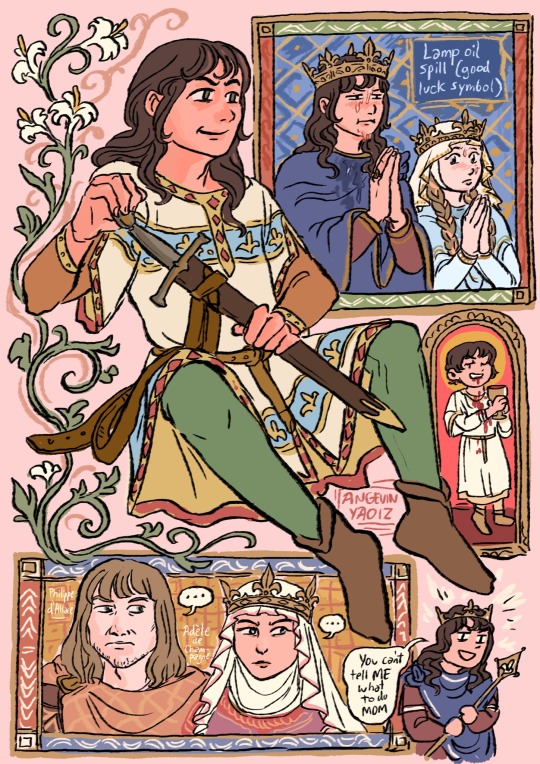
1180 era Philip Augustus
Grew out his hair for the coronation, wedding to Isabella of Hainault, seizing the dowager Queen Adele’s lands and feuding with his former guardian-turned-uncle-in-law Philip Of Alsace, the Count of Flanders. At this time, the Plantagenets supported the young Philip against his rivals (also tangentially the count of Flanders was half an Angevin, which is curious)
Wanted to do a design inspired by the long hair style that Louis VII and and Philip II seem to be sporting on their royal seals. Wondering if it was common style at that time or just kind of the visual convention. Merovingian throwback swag maybe? also it's just fun to draw.
Bonus tiny Philip inspired by that one vision Louis had about his boy drinking the blood of the Vassals, very normal indeed
#Philip augustus#historical art#12th century#medieval#medieval era#philippe auguste#Adela of Champagne#Philip Count of Flanders#Philippe d'Alsace#Isabella of Hainault#philip ii of france#my art#illustration
30 notes
·
View notes
Text
"Charles V had outmaneuvered the King of England to win for his brother Philip of Burgundy the same heiress that King Edward wanted for his son Edmund.
She was Marguerite of Flanders, daughter and heir of Louis de Male, Count of Flanders, he who had once run away from union with Isabella [of England]. Edward had been negotiating for this lady of large expectations for five years, even to the point of pledging Calais and 170,000 livres to her father.
But since the principals were related within the fourth degree of consanguinity, as hardly any two royal persons in Europe were not, a papal dispensation was needed. Determined to keep England and Flanders apart, Charles exploited the utility of a French Pope. Urban V refused the dispensation to Edmund and Marguerite and, after a decent interval, granted it to Philip and Marguerite, who were related in the same degree."
Barbara Tuchman, "A Distant Mirror: The Calamitous 14th Century"
#lilybarthes liveblogs a distant mirror#poor man! he even pledged Calais and it was for naught!#also according to this book isabella of england was a boss babe so it was louis' loss really#after being left at the altar by him she herself jilted another guy and directed most of the lavish dowry into her own coffers#and AT 33 married enguerrand de courcy who was 7 years her junior AND it was a love match apparently
2 notes
·
View notes
Text

Gravensteen Castle, located in Ghent, Belgium, is a striking medieval fortress that stands as a testament to the region's rich history. Constructed in the late 12th century by Count Philip of Alsace, it was designed to assert his dominance and provide a strategic defense against invaders. The name "Gravensteen" translates to "Castle of the Counts," reflecting its role as the residence of the Counts of Flanders. The castle's imposing stone walls, fortified towers, and deep moat exemplify medieval military architecture, offering a vivid glimpse into the past.
Over the centuries, Gravensteen has served various purposes beyond its original defensive role. It has been a royal residence, a court, and even a prison, each phase adding layers to its storied past. In the 19th century, the castle faced potential demolition but was saved and later restored, allowing it to become a significant historical site. Today, it functions as a museum, inviting visitors to explore its dungeons, armory, and ancient halls. Exhibits and guided tours provide insights into medieval life and the castle's evolution. Gravensteen Castle remains an iconic symbol of Ghent, blending historical intrigue with architectural splendor, making it a must-visit destination for history enthusiasts and tourists alike.
#montbrun #chateaudemontbrun #montbruncastle #richardthelionheart #instacastles #instacastle #castlesofinstagram #chateauxdefrance #medievalcastle #medievalfrance #medievaleurope #europeancastles #castlesofeurope #frenchcastle #middleages #medievalfortress #castlesoftheworld #medievalarchitecture #moyenage #medievalcastles
1 note
·
View note
Text

National Gallery Of Art @ngoadc
A close friend of Queen Victoria’s, Viscountess Jocelyn (1820–1880) began photographing in 1858. In 1859, she was elected to be a member of the Photographic Society of London. #TheEyeoftheSun ["Interior of Room," c. 1862, albumen print]

Description
William Ross's miniature of Lady Jocelyn was sent over from Brussels by Philip, Count of Flanders, to Queen Victoria to be copied by Moira in January 1882, less than two years after the death of Lady Jocelyn, but more than 40 years after Ross had painted the original. It was returned to the Belgian Royal Collection in May of the same year. Ross's miniature had been painted in the year of the Viscountess's marriage and a year before her appointment as Lady of the Bedchamber. Queen Victoria considered her 'a most excellent & sedate dame d'honneur' (RA VIC/Y 90/45, 8 February 1842). Lady Frances Elizabeth Cowper, youngest daughter of Peter Cowper, 5th Earl Cowper, and the Honourable Emily Mary Lamb, sister of Lord Melbourne. Lady Frances married, in 1841, Robert Jocelyn, 4th Viscount Jocelyn, heir of the 3rd Earl of Roden. One of the 12 unmar-ried ladies who were the trainbearers at Queen Victoria's marriage, she served as Lady of the Bedchamber to Queen Victoria from 1841 to 1867 and thereafter as Extra Lady of the Bedchamber. A noted beauty and an accomplished watercolourist, several of whose works remain in the Royal Collection, she died on 26 March 1880 at Cannes, predeceased by her three children. The Princess Royal wrote to Queen Victoria on that occasion: 'Once so much admired – so much "feted" and then so stricken and at last to die so lonely & broken hearted: it is too melancholy!' (RA VIC/Z 34/17, 8 April 1880). Inscribed on the reverse in ink, probably by the artist: LADY JOCELEYN [sic] / <1841.> / copied by E. Moira: / after Sir William Ross R.A.
Provenance
Commissioned by Queen Victoria in 1882.
Credit: https://www.rct.uk/collection/420399/frances-viscountess-jocelyn-1820-1880
0 notes
Text
Castle of Ooidonk, Belgium.
The castle was founded in the 12th century as a (fortified) farm, situated on a sand hill (donk) near a meander in the Leie. In the 14th century the farm had already grown into a fortified moated castle. The castle initially served as an outpost and defensive stronghold of the city of Ghent on the Leie. After the Battle of Nevele in 1381, it became the seat of the lordship of Nevele and came into the possession of a branch of the French Montmorency family. The castle was destroyed in 1491 by the people of Ghent, during the Flemish Revolt against Maximilian. In the 16th century, the castle was inhabited by Philip of Montmorency, the Count of Horne who was beheaded in 1568 by the Spanish ruler along with Lamoral of Egmont. In 1579, during the period when Ghent rebels had deposed Philip II of Spain as Count of Flanders, it was destroyed again. In 1592, the ruin was bought by Maarten della Faille, who had it rebuilt into a residential castle in Flemish Renaissance style. Through marriage the castle came into the possession of the Du Bois family.
Ooidonk Castle is now the private property of Count Henry t'Kint de Roodenbeke, eldest son of the late Count Juan t'Kint de Roodenbeke. The family has owned it since 1864, when Henri t'Kint de Roodenbeke purchased the castle. The family expanded the castle without compromising the playful Renaissance style. The French architect Clément Parent (1823-1884) provided the design and led the renovation works from 1864 to 1875. The interior was renovated and the gardens were redesigned. Count t'Kint also had the caretaker's house built and the wrought iron fence with his coat of arms installed. The interior can be described as pure neo-Flemish Renaissance style, with mention of the family's home chapel in neo-Byzantine style.
The castle was protected as a monument in 1944.

162 notes
·
View notes
Text
"The administrative system within Boulogne grew in complexity during Ida’s rule. Four towns were given keures (law texts) and were governed by mayors aided by echevins (aldermen) and price-setting officials. The mayors of Boulogne and Desvres witnessed the act recording the terms of their daughter Matilda’s marriage to Philippe Hurepel. In Calais, Ida and Renaud granted the merchants a guild, fronting two-thirds of the cost, and establishing that they would receive two-thirds of the revenue. Merck too had a merchants’ guild. The communal charters reveal that the counts retained the rights of the ban, high justice, and the mint. The household officers continued to play an important role in Boulogne: Bald win of Ermlighem (and Wissant) was constable, while Raoul of Lens (1182–1188), Renier Morsel, and Eustace le Moine served as seneschals. Arnulf, advocate of Boulogne, Henry of Belle, bailli of Desvres, and William Niels, bailli of Merck, were also frequent attestors of comital acta.
Like the Flemish counts Philip and Baldwin VIII, Ida and Renaud relied upon the bailli to maintain peace, although there is no surviving ordnance concerning the baillis’ jurisdiction. They do not seem to have gone quite as far as the Flemish counts in relying upon the bailli as their local agents (replacing the castellans) and their representative over the local feudal courts. In both counties, the castellans continued to provide military service. Similarly, Ida and Renaud, like the Flemish counts, controlled the granting of privileges to towns, establishing fairs, reclaiming land, and enforcing balfart (corvee for building fortifications). There is no evidence for a chancery or an official responsible for overseeing the collection of comital revenues or guarding the comital seals, as there was in Flanders and Hainaut. Two clerics, Henry and Nicholas, wrote letters, writs, and acta for Ida and Renaud. It seems likely that Ida and Renaud, like Waleran of Meulan, used letters to trusted local agents to administer their dispersed lands."
— Heather J. Tanner, Lordship and Governance by the Inheriting Countesses of Boulogne, 1160-1260
#I love reading up about Ida as a countess and administrator#It's a great counterpoint to the contemporary image of her as a fickle faithless and scheming Helen of Troy#and the modern image of her as a passive pawn and abducted trophy#Both of which are equally gendered and equally misogynistic#Ida of Boulogne#women in history#french history#12th century#13th century#my post
6 notes
·
View notes